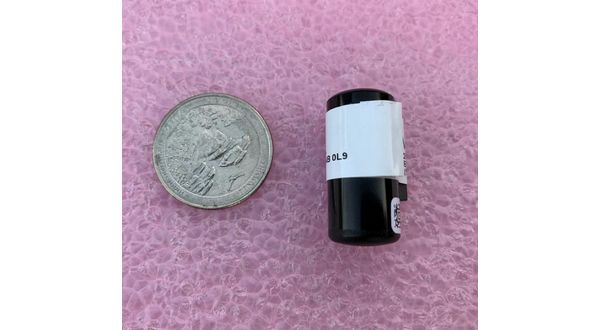
Photo: A Bull Shoals walleye tagged with an orange dorsal fin tag and a transmitter, with the incision site shown.
Biologists from North Central Arkansas have partnered with fisheries biologists from the Missouri Department of Conservation (MDC) and researchers with the University of Missouri to study the movements of walleye in Bull Shoals Lake. Biologists collected walleye from below the Powersite Dam, Big Creek, Theodosia arm and the Bull Shoals Lake Dam over the past two weeks.
In all, 60 walleye were implanted with transmitters to track their movements over the next few years. The small transmitters are surgically implanted in each walleye; this process is safely monitored to ensure the survival of each fish.

Photo: Small transmitters like this are surgically implanted in each walleye.
The transmitters emit signals every two minutes, which will hopefully be detected by receivers (i.e., device listening for signals from the transmitters) when the implanted fish swims by the receiver. Receivers have been placed throughout the lake by researchers with the University of Missouri for another study. Also, the researchers will periodically search for the implanted fish using boat-mounted receivers to gather more information about the tagged fish.
Biologists tagged the implanted walleye with an external orange tag just below the dorsal fin (i.e., the fin on top of the fish).
Should you catch one of these tagged walleye, consider releasing it to allow to continue to track them through time.
If you decide to harvest the fish, please call the number on the tag for the Arkansas Game and Fish Commission office (1-877-425-7577) so that the transmitter can be retrieved and potentially implanted in another walleye.
WebReadyTM Powered by WireReady® NSI










